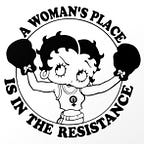The Legend of Joan of Arc: the saint, the puppets and the feminism
You may already know the legend of Joan of Arc. Her story was told so many times and with so many different approaches since the beginning of silent cinema, so it’s natural for us to ask: what could be brought as a novelty in another film about the warrior saint? People who say that nothing new could be added to the story certainly are unaware of the existence of “The Legend of Joan of Arc”, a film made with puppets — and a strong feminist speech.
The 48-minute film tells the story we all know. Joan of Arc, a French peasant, heard mysterious voices and, guided by Saint Michael, led the French army in the Battle of Orleans and was fundamental for the crowning of Charles VII as King of France. Because she heard voices and dressed as a soldier — that is, in men’s clothes -, Joan was condemned , by the Inquisition, to death by burning at stake.
Feminism is found in the most important part of the film, when Joan is already a warrior and leader of the army. Being called “the maiden of France”, Joan faces obstacles in order to be respected by the soldiers. After facing mockery from the nobles, she must face the disbelief of the army. When she is presented to a commander, she even hears “give me a kiss” from a soldier in the crowd — showing that cowards hide in crowds since the Middle Ages. Harassment is also there when she fights the English army.
According to Tiago Barreiro, unit production manager of “The Legend of Joan of Arc”, the film started to take form, after many years of pre-production, right after Donald Trump became the president of the US. In this context, it was important to highlight that Joan of Arc is also a feminist heroine. She may have lived in the 15th century, but the obstacles she met aren’t in the past: even today, thousands of women are trying to do deeds as revolutionary as hers, but they are being ridiculed and discredited by misogynists. The past few years have showed us that we never stopped needing feminism.
It’s quite curious to think about Joan of Arc as a feminist symbol. She’s mostly remembered as a religious symbol, but these two statuses as icon do not cancel each other. Even when alive, she was already celebrated by proto-feminist author Christine de Pizan, who said that it wasn’t by chance that God chose a woman to free the people from oppression. Joan had stood up to a male-dominated Catholic Church in the 15th century, and this boldness made first-wave feminists identify with her. In England, starting in 1911, Suffragette parades were led by a woman dressed as Joan of Arc and in the USA, during World War I, Joan’s figure was evoked to sell war bonds (see image below). In France, however, Joan is used as a symbol of reactionary nationalism by the far-right since the early 20th century.
Written and directed by Steven Ritz-Barr and produced by Classics in Miniature, the film presents an exquisite work from a multicultural team that brought to life the puppets made by the Russian puppeteer Eugene Seregin, having as inspiration the book by Mark Twain. The project took nearly eight years to be finished, as 25 highly detailed puppets were made — only Joan and her horse took eight months to be finished. In the voice cast, we highlight Andia Winslow, the voice of Joan, who, besides being a voiceover actress, is an activist and athlete: Winslow was the fourth African-American to compete in the Ladies Professional Golf Association!
“The Legend of Joan of Arc” has been exhibited, three times a day, at the Joan of Arc museum at the heroine’s hometown of Domremi, in France. It can also be found to rent or buy on Vimeo. It’s a quick watch, but a rewarding experience even for those who are very familiar with her story.
